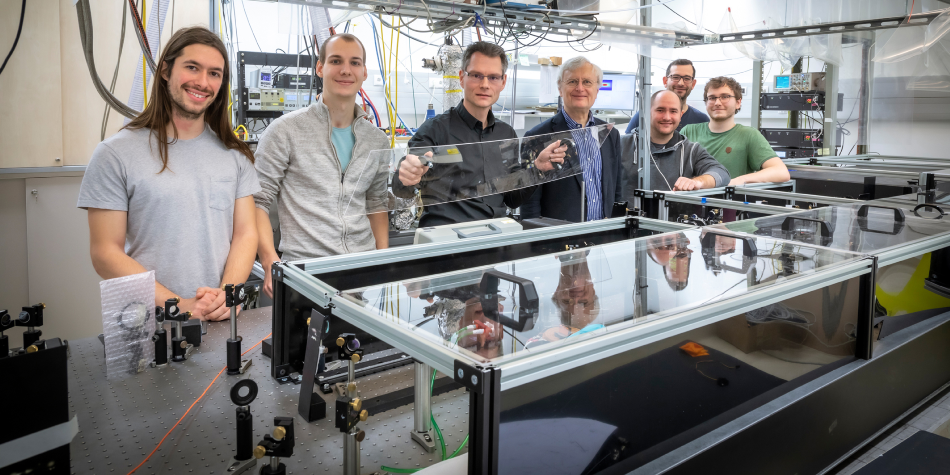Mar 24 2020
New techniques for time-resolved femtosecond laser spectroscopy for examining ultrafast processes in molecular systems have been developed by researchers led by Markus Koch, head of the Femtosecond Dynamics research group at the Institute of Experimental Physics of TU Graz.
 The research group Femtosecond Dynamics of the Institute of Experimental Physics has once again achieved a success in quantum physics. From left to right: The study authors Pascal Heim, Bernhard Thaler, and Markus Koch with the former head of the institute Wolfgang Ernst and the colleagues Stefan Cesnik, Leonhard Treiber, and Michael Stadlhofer. Image Credit: © Lunghammer – TU Graz.
The research group Femtosecond Dynamics of the Institute of Experimental Physics has once again achieved a success in quantum physics. From left to right: The study authors Pascal Heim, Bernhard Thaler, and Markus Koch with the former head of the institute Wolfgang Ernst and the colleagues Stefan Cesnik, Leonhard Treiber, and Michael Stadlhofer. Image Credit: © Lunghammer – TU Graz.
For the first time in 2018, the group showed that it is possible to observe photo-induced processes within a helium nanodroplet—a nanometer-sized droplet of superfluid helium that acts as a quantum solvent. For the analysis, a single indium atom was placed within the droplet and the system’s reaction was analyzed using the pump-probe principle.
An ultrashort laser pulse was used to excite the atom, thereby stimulating the rearrangement of the helium environment within a few femtoseconds (10−15 seconds). This development was probed by a time-delayed second laser pulse, providing information on the behavior of the system.
Successful Next Step
Koch and his collaborators Miriam Meyer, Bernhard Thaler, and Pascal Heim used the same method to visualize, for the first time, the movement of single, isolated molecules within a helium droplet.
An indium dimer molecule was formed within the helium droplet by successively loading two indium atoms into it. Then, a vibration was induced in the molecule by photoexcitation and the movement of the nuclei was visualized in real time using the same pump-probe technique.
Two aspects of the experiment are considered as specifically crucial: Firstly, it shows that such experiments facilitate the observation of ultrafast intramolecular processes—processes that take place inside an excited molecule.
Helium has Little Influence on Embedded Molecules
Secondly, the researchers found that the impact of superfluid helium on molecular vibrations is considerably weaker when compared to traditional solvents like methanol or water. In general, intramolecular processes are affected by interactions with the environment, and in traditional solvents, this interaction is very strong, which makes it difficult to observe the intramolecular processes, explained Bernhard Thaler.
The quantum fluid helium, which has a temperature of only 0.4 K (note: minus 272.75 degrees Celsius), is truly special, as the perturbation on the embedded molecule is very low. Additionally, fragile molecules, which often break apart in other techniques, are stabilized due to the cooling mechanism and can now be investigated.
Bernhard Thaler, University Assistant, Institute for Experimental Physics, TU Graz
Markus Koch Wants to Extend the Method to Complex Molecules
“We see great potential in helium nanodroplets because they offer wonderful opportunities for creating molecular systems,” stated Koch, elucidating why he and his colleagues created this technique for femtosecond studies. In the future, the goal of the Femtosecond Dynamics group is to apply it for more complex systems.
The structure of indium molecules, which we used as a model system, is very simple but in the future we want to look at technologically relevant molecules, which are more complex. I consider this as promising approach to molecular engineering, where future materials are developed by manipulating the quantum behavior of their molecular constituents.
Markus Koch, Head, Femtosecond Dynamics Research Group, Institute of Experimental Physics, TU Graz